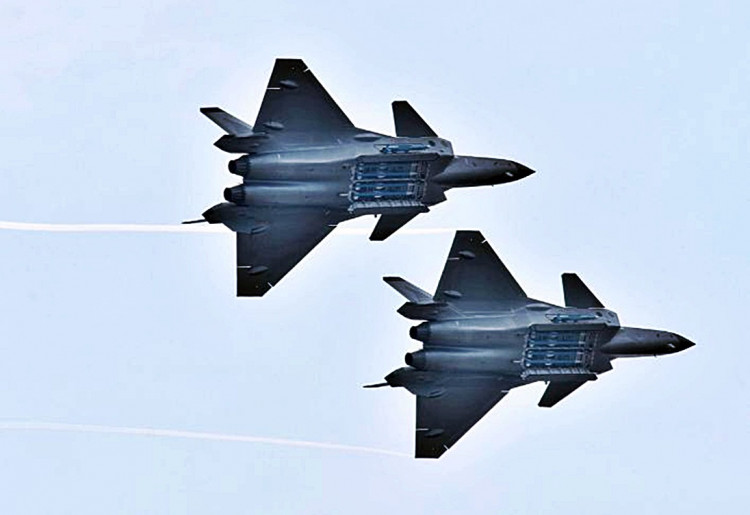As was widely expected, the People's Liberation Army Air Force (PLAAF) has deployed Chengdu J-20 "stealth" fighters to an air base in range of the new Dassault Rafale multi-role fighters of the Indian Air Force (IAF).
The PLAAF's move to fight fire with fire was predicted by Indian military pundits after the first five Rafales arrived from France on July 22. The Rafales were flown by IAF pilots all the way from Merignac, France to Ambala Air Force Station in northern India after a long-distance flight lasting almost two days.
Ambala is within easy flying time of Ladakh, the Indian controlled territory along the Line of Actual Control where 20 Indian Army soldiers and more than 40 men of the People's Liberation Army Ground Force (PLAGF) were killed in a bloody night brawl on June 15. Tensions in the area have been high since.
The IAF has ordered 36 Rafales from Dassault Aviation. The remaining fighters will be delivered over the next two years.
On Tuesday, Indian media reports confirmed the PLAAF deployment of two J-20s to the Hotan Air Station in eastern Ladakh. Two J-20s are clearly discernible in commercial satellite images of the Hotan Air Station.
Chinese social media users first spotted the stealth jets. The images from Hotan are the first sightings of the J-20 near the border with India.
The Hotan Air Station is about 800 kilometers by road from Ambala and only 300 kilometers from the LAC. It's now one of the largest bases in the PLAAF's Western Theater Command.
Chinese state-controlled media denies any J-20s are present at Hotan despite the indisputable proof offered by the satellite photos.
"The PLA has not announced any J-20 deployment at Hotan Airport," said a story in the Global Times, a tabloid owned by the Communist Party of China.
The presence of the J-20s, however, seems to indicate China is preparing for any eventuality.
"The J-20 is a long-range heavy fighter jet," said Chinese military aviation expert Fu Qianshao. "So when deployed in Hotan, it can potentially cover many areas in Central and South Asia."
Fu, however, believes the presence of the J-20s in this flashpoint region is likely part of normal training on long distance flight and environment adaptation.
"China is a large country with many airfields in various terrains and under different climate conditions, and the J-20 needs to fly in more regions to adapt," according to Fu.
Indian military pundits, however, claim the J-20 deployment, even if temporary, signals China's resolve to counter any Indian military move in Ladakh. They believe the PLAAF might deploy more of its 50 J-20s to the region within the year.






